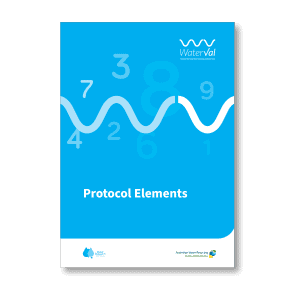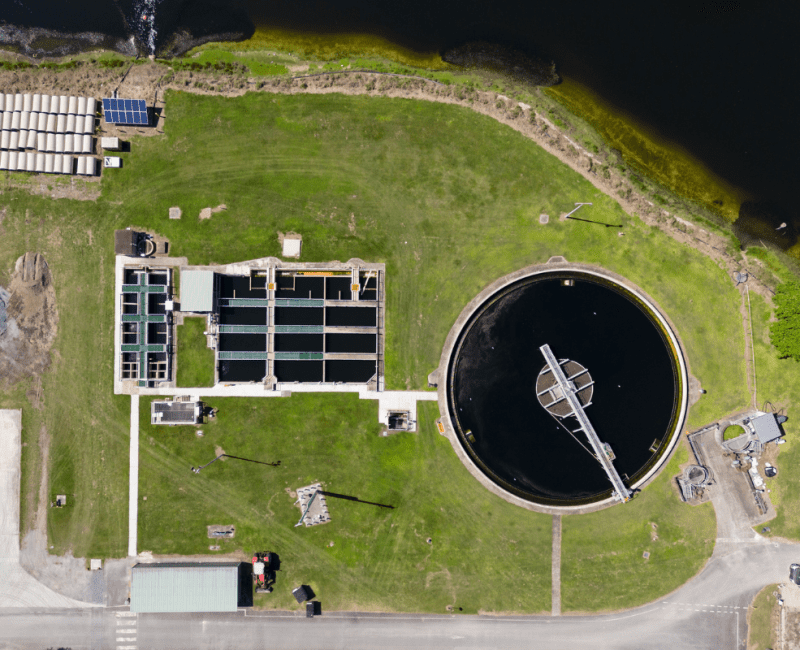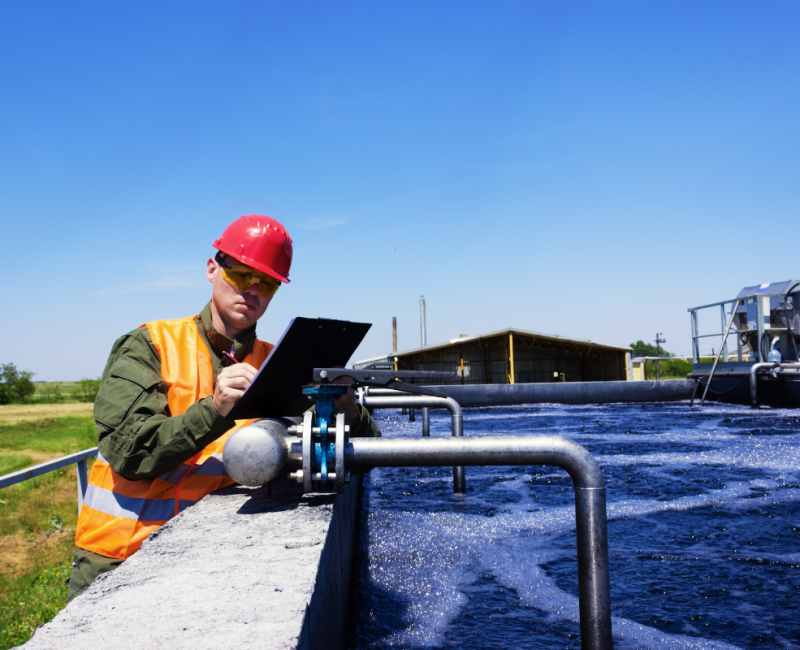The WaterVal Validation Framework is underpinned by Validation Protocols, which are agreed methodologies to assess contaminant removal. Each Validation Protocol is designed based on nine Protocol Elements to ensure consistency and uniformity.
Protocol Elements
The Protocol Elements are the building blocks of the Validation Protocols and are fundamental to the creation of all current and future protocols.


Element 1
Identify the mechanisms of contaminant removal by the treatment process unit
Successful validation of a treatment process unit identifies which reduction mechanisms apply to the process, and how they affect the target contaminant. Mechanisms may include inactivation (e.g. chlorination), physical removal (e.g. sedimentation) or predation. A single treatment process may integrate multiple reduction mechanisms (e.g. membrane bioreactor).
Element 2
Identify the target contaminant, or appropriate surrogates, that are the subject of the validation study
A target contaminant is the one demonstrated to be most resistant to the treatment process being validated. Selection is based on prevalence, resistance to treatment, survival in the environment and pathogenicity. Availability of reliable analytical methods for the target is important for designing a validation study. If use of the target is not practicable, potential surrogates must be identified.


Element 3
Identify the influencing factors that affect the efficacy of the treatment process unit to reduce the target contaminant
Any influencing factor (e.g. feedwater characteristics, hydraulic loads or manufacturing defects) that is deemed to have a significant effect on treatment efficacy needs to be monitored, as the ultimate control of the system relies on demonstrating that these factors are within a validated range. A validation study is only applicable to treatment process units that function within the validated operational envelope.
Element 4
Identify the operational monitoring parameters that can be measured continually and relate to the reduction of the target contaminant
Operational monitoring parameters are used to measure the performance of the treatment process unit, and relate to the reduction performance of the target (treatment efficacy). Continuous monitoring of operational parameters gives assurance that the system is under control and provides alerts when treatment levels are unacceptable, triggering immediate corrective action. A risk management framework, such as the Hazard Analysis and Critical Control Point (HACCP) system, should be used to identify these factors.


Element 5
Identify the validation methodology to demonstrate the capability of the treatment process unit
Identifying the validation methodology demonstrates the pathogen log reduction capability of the treatment process unit. The validation methodology involves a testing program that quantifies the reduction of indigenous or challenge-spiked organisms or particulates, while monitoring the operational parameters to confirm that the system is within the defined operational envelope. Six key concepts have been identified, including what is monitored, how many samples and QA/QC procedures.
Element 6
Describe a method to collect and analyse data to formulate evidence-based conclusions
The data collected during the validation testing program must be representative and reliable. This element outlines parameters for the collection of quality data, a monitoring program that ensures data is relevant and statistically valid, and an analysis process that accounts for uncertainty including biases and error in measurement. The method must demonstrate that measurements are traceable to a registered standard method, where this is available.


Element 7
Describe a method to determine the critical limits as well as an operational monitoring and control strategy
A critical limit is a value that must be met to ensure that a critical control point (CCP) effectively controls a potential hazard. Critical limits need to be established for operational monitoring parameters and correspond to the point at which the treatment process is performing inadequately or outside the test envelope. The validated LRV applies when the treatment process is functioning within its critical limits.
Element 8
Describe a method to determine the LRV for each contaminant (pathogen groups – protozoa, virus or bacteria) in each specific treatment process unit performing within defined critical limits
The removal efficiency of a treatment process unit demonstrated by the challenge test results is determined according to the following equation:
LRV = log10 (feed concentration) – log10 (product water concentration)
Unless otherwise specified, the lower 5th percentile LRV, established during challenge testing, must be used. In most cases, the LRV attributed to a treatment process unit is limited by the sensitivity of the operational monitoring technique.


Element 9
Provide a means for re-validation or additional onsite validation where proposed modifications are inconsistent with the previous validation test conditions
Re-validation or additional onsite validation testing for treatment process units may be required if there are design modifications to the unit (including critical system components such as UV lamps and membrane modules), control philosophy and operational monitoring parameters (including critical limits) that vary from the documented validation test conditions. Modifications and/or changes that require re-validation must be described.
Current Research
More Information
Dr Marty Hancock | Research Manager | marty.hancock@waterra.com.au




